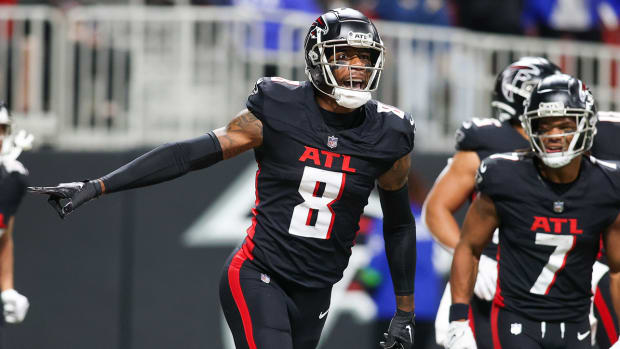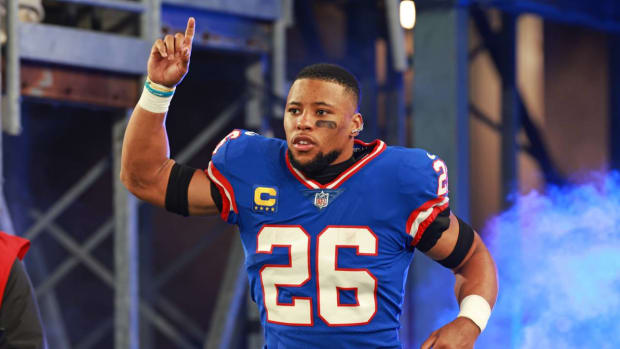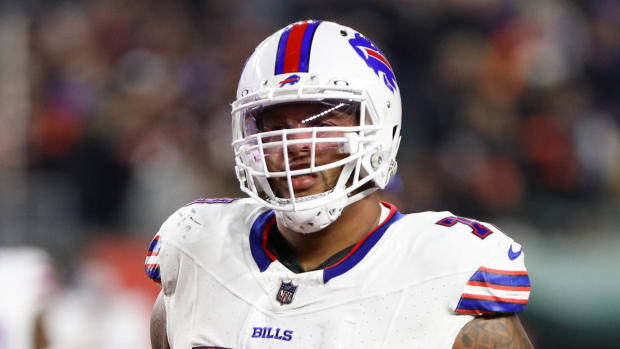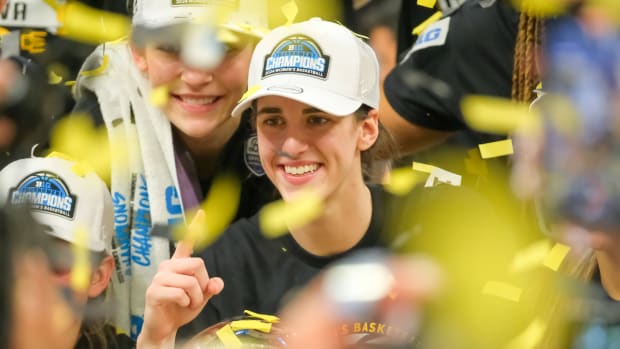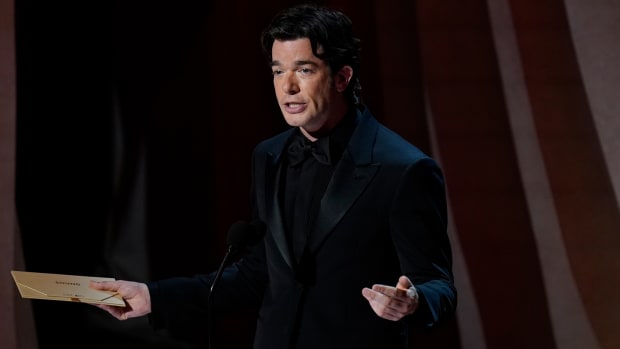No Country for Big Men: How Video Game Offenses Portended a Strategic Shift in the NBA
Illustration by Patrick Truby || rembrandtofroundball.tumblr.com
The big story on everyone's lips right now is the decision of Indiana Pacers coach Frank Vogel to sit his star center, Roy Hibbert, in the closing seconds of the first game of the Eastern Conference finals. A week ago, the hottest, and most beloved, story among both fans and insiders had been the emergence of Stephen Curry and the overachieving Golden State Warriors. The common theme between these two plotlines? Short dudes (relatively, anyway).
Vogel sat Hibbert out of concern that his 7'2 center wouldn't be able to keep up with the Heat's Chris Bosh -- a skinny, smaller forward playing the center position -- out in the perimeter. The Warriors, though they ultimately lost the series, played the San Antonio Spurs tougher than anyone outside of the Bay Area or the Curry household could have ever imagined, and they did so by using unconventional small lineups -- some of which had 6'7 shooting guard Klay Thompson as the tallest member -- consisting of four to five shooters on the court at all times.
The Spurs only turned the tide by eventually going small themselves.
This small lineup style of play -- in short, spacing the floor with shooters who rely on drive-and-kick and pick-and-roll action to create open looks -- was first utilized by former NBA coach Don Nelson, who unleashed a go-go-go offense with the Milwaukee Bucks in the late 80s and then twice with the Golden State Warriors: the Run TMC era in the 90s and the "We Believe" Warriors of 2007. Initially dubbed "Nellieball" before becoming "smallball", the strategy was a hit with casual fans but mostly dismissed by coaches, analysts and serious hoopheads as a gimmicky approach that wouldn't yield longterm success. "Video game style basketball," they derisively labeled it. But still it persisted. Check out this quote from Nelson's assistant, Larry Riley, in a 2007 New York Times article:
"That would be ideal [if the Warriors would just get the ball and go.] If we had our choice, we would never run a play.”
As a lifelong gamer who has played just about every NBA game released over the last 20 years -- from NBA Jam at the arcades to NBA Live 96 on the Super Nintendo to NBA Shootout 97 on Playstation to NBA 2K13 on the Xbox 360 today -- Riley's quote sums up the attitude of myself and most people I've played with, or against, on digital courts.
Just get the ball and go.
Most basketball video gamers have always heavily emphasized shooting. It's a fact borne out by video game message boards, like Operation Sports, where you can always find snobs who claim they play their digital team exactly like its real life counterparts, and sneer at people who "jack up threes nonstop." But you can't blame us for just getting the ball and go, really. In the early days of NBA video games—say, Konami's Double Dribble—all you really could do was shoot. The games weren't advanced enough to introduce many other basketball aspects. You weren't going to be pulling off intricate post moves with just two buttons on the Nintendo controller.
Though games, specifically the critically acclaimed NBA 2K series, have gotten really, really advanced the past decade -- you can now, like, control your dribble moves and passes and even what shoes you wear -- the simple fact remains that not all basketball traits are created equal on the digital platform. Despite the nuances developers have added to every aspect of the games -- including post play ability, lateral movement on defense and passing skills -- elite shooting ability (and elite dunking) still, and will always, translate better to games than other skills.
As a result, the most powerful digital NBA players are always the guys with high ratings in shooting or dunking, defensive efficiencies or height or basketball smarts be damned. (And if a digital player rates high in shooting and dunking, like Vince Carter circa 2001? It's borderline cheating.)
I remember using the early 2000 Seattle SuperSonics in NBA Live and 2K: I'd move Rashard Lewis -- a 6'10 sharpshooting small forward -- to center and start Brent Barry (shooter) over Ruben Patterson (a rugged defender with no offensive game). Later, in the mid 2000s, I would use the Spurs and start Manu Ginobili at point guard (because Tony Parker couldn't shoot) alongside Michael Finley, Bruce Bowen, Tim Duncan and Robert Horry. My center, by title only, was Horry, who I kept stationed beyond the three point line, jacking longrange bombs left and right.
I would take that lineup online and hear snobs complain about how unrealistic it was.
Meanwhile, in real life, Don Nelson—and later Mike D'Antoni, whose Phoenix Suns in the mid 2000s had also adopted smallball—heard the same criticism. Charles Barkley, for one, must have bellowed a thousand variations of "you can't win by just shooting three pointers" on Inside the NBA over the past decade. He was hardly alone. The majority of analysts, many of whom are former players, denounced smallball. That's why Nelson and D'Antoni remain two of the most polarizing high-profile coaches of the past few decades.
Most of the detractors defended their point by preaching several bits of basketball conventional wisdom:
--You live by the three, you die by the three (don't over-rely on threes).
--You need two big men who can rebound and play in the post (size matters).
--Midrange game is an art form that should be mastered (Michael Jordan, the greatest, was almost exclusively a midrange shooter in his final few years with the Bulls).
It's understandable why they thought that way at the time. All of us who grew up playing the game heard those things in basketball camps. But thanks to the NBA's advanced metrics movement of recent years, we're learning now that much of basketball's conventional wisdom is outdated and flat-out false. Shooting a lot of threes is bad? Not true. Stats geeks have concluded that shooting a three is better than shooting a midrange jumper because, obviously, three points are greater than two, and also because a missed three results in more offensive rebounds than any other shot. It's playing the numbers and odds, almost like a poker pro calculating his outs on an open-ended straight draw with two cards to come.
Here's LeBron James, whose game has reached a new level of excellence this year, explaining to Grantland why he's gotten better:
"You know, I changed. I didn't shoot many 3s last year, I kind of played more in the post, and more in the midrange, but I felt like I worked on 3s enough this past offseason that I could make another change — and the least efficient shot in our game is the midrange shot — so I thought maybe I could move it out, improve my 3-point shooting, continue to work on my low-post scoring, and then leave the midrange to be my next journey."
NBA teams have noticed this, as three point shooting in the league has gone up drastically: Back in 1987, one in 18 shots was a three pointer. Today, one in four shots is a three. Even as recently as 10 years ago, teams were averaging 14 three-point attempts per game. This season's average? 20+ per team per game, and that number is steadily trending up.
So with NBA teams coming around to the fact that advanced metrics are to be taken seriously -- and more and more teams are hiring advanced stats gurus to work in their front offices, with the Philadelphia 76ers's hiring of Sam Hinkie being the most recent example -- there has been a sea change in how a modern NBA team crafts its offense: Teams want to space the floor, take lots of threes and ideally use only one big man, because bigs are typically slower and lack shooting range.
Layne Murdoch Jr./NBAE via Getty Images
Most of the best teams in the NBA utilize this strategy. The Miami Heat started using James at power forward last year, and though Oklahoma City Thunder coach Scott Brooks has been stubborn, all stats point to the Thunder being more dangerous when Kevin Durant shifts to the four. The New York Knicks, who just had their best season in some 15 years, used Carmelo Anthony in the same way. These teams, especially the Heat and the Knicks, do not have a single big man with a credible post-game on payroll. They zip the ball around the perimeter looking for an opening to either drive to the hoop or shoot a three pointer.
As mentioned earlier, the Spurs, who were befuddled by the Warriors' attack through the first three to four games of the series, eventually joined the bandwagon: In the final, crucial minutes of their series-clinching game 6 win over the Warriors, coach Greg Popovich benched Tim Duncan in favor of a four-guard, one-big lineup. Real-life teams are now running the same sort of offenses as Nelson, D'Antoni and us video game ballers.




